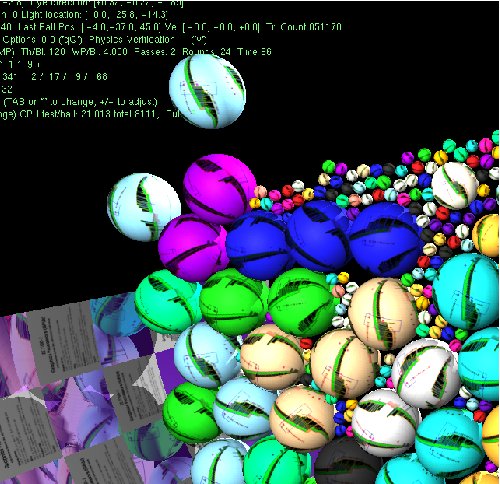
Lab Highlights
- Dual GPU systems, with Fermi-class GPUs.
- Each system equipped with CUDA toolkit, and full GNU toolchain.
The Student GPU/GPGPU Development Lab provides graduate and undergraduate students with computers equipped for the fast-growing area of GPU/GPGPU computing. Driven by the need for real-time 3D graphics for game consoles and home computers, GPUs have become a low cost and powerful resource for scientific and other types of computation.
The current (as of December 2011) set of machines feature six- and quad-core Intel CPUs paired with, in most cases, NVIDIA 500-series (e.g., GeForce GTX 580, Quadro FX 580) GPUs, driving large 22 inch 16:9 screens. The machines run Linux with software needed to program the GPUs using OpenGL 4.2, OpenGL shading language, and CUDA 4.1, the full GNU toolchain is provided for CPU programming. This setup supports projects in which graphics can be implemented using the newest &ldqu;unified” shader models and techniques distributing physics computation between a multicore CPU and the GPU, exploiting each device's special strengths.
The lab supports coursework at the undergraduate and graduate levels, plus the needs of students working on individual projects. Courses cover the basics of 3D graphics GPU programming, advanced graphics techniques, GPU programming for non-graphical purposes such as physics simulations, and GPU hardware design.